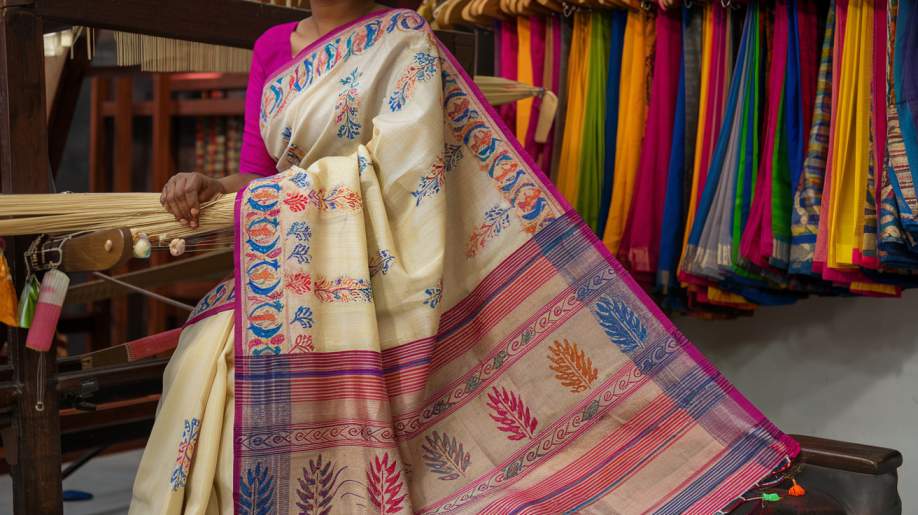The Artistry Behind Pasapalli Sarees
Pasapalli sarees, woven in the serene landscapes of Odisha, India, are not just garments but stories interwoven with rich cultural heritage, skilled craftsmanship, and a commitment to sustainability. This blog explores the intricate world of Pasapalli sarees, from their vibrant designs to their certification legacy, captivating readers with the art of weaving, the culture they embody, and the significance of preserving this exquisite tradition.
These sarees are famous for their unique geometric patterns influenced by local nature and tribal motifs. Crafters who have inherited their skills through generations weave this craft, reflecting a deep connection to the local environment and cultural identity. They originate from Pasapalli village in Ganjam district.
Pasapalli sarees, crafted from cotton and silk, offer comfort and sophistication. The artisans use “ikat” techniques, dyeing the threads before weaving. This careful method creates striking, vivid colors that tell stories. The intricate designs require extensive time, and each saree embodies the weavers’ passion and dedication to their art.
Pasapalli Saree Stories: A Culture in Every Fold
Beyond their aesthetic appeal, Pasapalli sarees hold immense cultural significance. They are often worn during festivals, weddings, and traditional ceremonies, symbolizing grace and dignity. The sarees act as a canvas for storytelling, with patterns that reflect the region’s folklore, nature, and the lives of the artisans.
In Odisha, wearing a Pasapalli saree is a matter of pride. The sarees have become cultural icons representing the state’s rich heritage. As women don these exquisite garments, they carry forward the legacy of their ancestors, celebrating their identity and roots. Moreover, the sarees are vital in empowering women, providing them with a source of income and a means of expressing their creativity.
A Commitment to Nature Sustainable Making
In an era where fast fashion dominates, Pasapalli sarees stand tall as a hope of sustainable fashion. The artisans prioritize eco-friendly practices by using natural dyes and sustainable materials. The weaving process is labor-intensive but environmentally friendly, ensuring the delicate balance between tradition and modernity is maintained.
Moreover, the growing consciousness of consumerism has led to an increased demand for sustainable products. By choosing Pasapalli sarees, consumers support local artisans and contribute to preserving this age-old craft. Each saree purchased is not just a fashion statement; it’s an investment in the future of sustainable practices and the weavers’ livelihoods.
Protecting The Heritage
The certification of Pasapalli sarees, particularly under the Geographical Indications (GI) tag, plays a crucial role in protecting this unique heritage. The GI certification ensures that the sarees are authentic, preserving their originality and the skills of the artisans. This legal recognition helps promote sarees in global markets and safeguards Odisha’s cultural heritage.
GI certification allows consumers to make informed choices and empowers the weavers. By providing artisans with a space to showcase their talent, this certification ensures the upholding of Pasapalli saree traditions for future generations.
Weaving the Future
Pasapalli sarees are more than just garments; they blend artistry, culture, and sustainability. As we celebrate their legacy, we must recognize the artisans behind these exquisite creations and ensure their skills are honored and passed down. By choosing Pasapalli sarees, we embrace a sustainable future, supporting local communities and keeping the spirit of this craft alive.
So, the next time, just keep in mind whenever you drape a Pasapalli saree that you are not just wearing a basic saree; you are embracing a rich historical piece that has stood the test of time, woven into every thread of the saree. Let’s continue to cherish and promote the legacy of Pasapalli sarees, keeping the artistry and traditions alive for generations to come.


